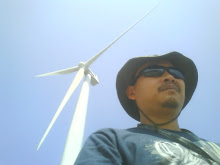We may opt to look for alternative fuels to help us reduce our expense on petrol... here is some backgrounder on alternative fuels.
1. What are alternative fuels?
Alternative fuels are fuels commonly referred to as replacement for petroleum-based fuels like diesel and gasoline. They are considered “cleaner” in the sense that they yield substantial energy supply with less impact to the environment. Some of these are agriculture-based and therefore renewable.
The view that vehicles contribute the most to air pollution and climate change in the metropolis because they emit carbon dioxide heavily has made the government put top priority to four alternative fuels with potential use in the transport sector. These are compressed natural gas (CNG), liquefied petroleum gas (LPG), biodiesel and alcogas.
2. What is compressed natural gas?
CNG is a natural gas comprised mainly of methane, although it also contains small amounts of propane and butane. It is produced during the winning of crude oil or directly from natural gas fields. When subjected to low temperatures, it turns into liquefied natural gas or LNG.
While natural gas is still a fossil fuel, CNG is nonetheless considered a better alternative to diesel and gasoline because it is the cleanest burning alternative fuel (therefore, less pollution and vehicle maintenance) and has higher heat content.
A study made on dedicated natural vehicles (these are vehicles that run on 100% natural gas) indicated the following advantages over gasoline-fed vehicles:
a. reduced exhaust emission of carbon monoxide (CO), non-methane organic gas (NMOG), oxides of nitrogen (NOx), and carbon dioxide (CO2);
b. reduced emission of greenhouse gases and toxins;
c. little or no evaporative emission during refueling and use;
d. little or no emission of particulate;e. lower vehicle maintenance cost.
3. What is liquefied petroleum gas?
LPG is a mixture of propane and butane, produced as a by-product during the oil refining process or when the propane and butane are extracted from natural gas.
The prospect of LPG as a transport fuel substitute in the country is great. LPG is reportedly used in over four million vehicles in 38 countries worldwide. Second, LPG supply infrastructures are already in place, with more than 150 supply points nationwide and estimated combined storage capacities of the country’s nine major suppliers of around 110,000 metric tons per month. Third, the refueling process is simple and cheaper.
4. What is biodiesel?
Biodiesel is made from vegetable oil or animal fats. An example of biodiesel is coconut methyl ester or is more popularly known as cocodiesel. The interest in biodiesel as an alternative fuel for motor vehicles lies in its distinct qualities as being biodegradable and renewable. Compared with conventional diesel, it has higher lubrication, burns cleaner because it is oxygenated and locks carbon dioxide in a closed circuit. It can be used in any conventional diesel engine without any need for modification. Another plus factor for biodiesel is that it can create new market opportunities for our farmers.
5. What are alcogas, al-gas, alco-diesel?
These three, alcogas, al-gas and alco-diesel, are collectively named alcohol fuel blends. Alcogas is a blend of 10-15% anhydrous alcohol and 85-90% gasoline. Al-gas is a blend of 40% hydrous alcohol and 60% gasoline plus an additive. Alco-diesel is a blend of hydrous ethyl alcohol and diesel fuel.
references: Department of Energy - Philippines
Thursday, June 19, 2008
Alternative Fuels
Labels:
al-gas,
alco-diesel,
alcogas,
alternative,
biodiesel,
cng,
emission,
fuels,
gas,
greenhouse gases,
lng,
lpg,
methane,
vegetable oil
Subscribe to:
Post Comments (Atom)

No comments:
Post a Comment